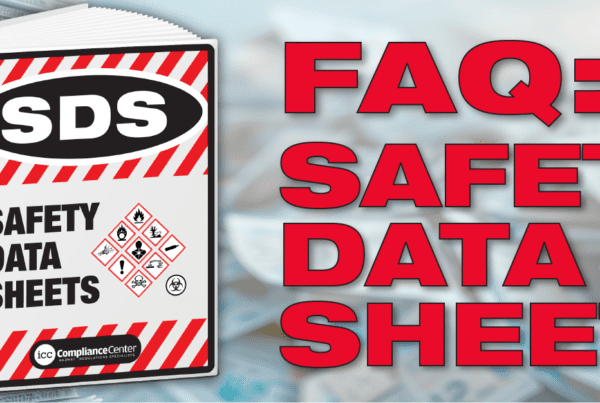Frequently asked questions about the Transportation of Dangerous Goods Regulations.
When using a dangerous good (such as ethanol or formaldehyde) to preserve a biological sample (such as a frog or an animal organ) during transportation, should the dangerous good be exempt from the Regulations?
No, sections 1.19.1 and 1.19.2 do not apply to this situation. They apply only to samples that are believed to be dangerous goods. In this case, the sample is not a dangerous good, it is the substance used to preserve the sample that is a dangerous good.
What do the letters "N.O.S." mean?
N.O.S. means “Not Otherwise Specified”. For example, even though gasoline is a flammable liquid, the shipping name “FLAMMABLE LIQUID, N.O.S.” cannot be used because gasoline is otherwise specified.
Under section 1.39, one must display the mark illustrated in Part 4, Dangerous Goods Safety Marks, for infectious substances included in Category B: the mark is a diamond-shaped mark with UN3373 in it. As section 1.39 does not indicate that Part 4, Dangerous Goods Safety Marks, does not apply, must the Class 6.2, Infectious Substances label (three crescents superimposed on a circle) also be displayed?
Yes, the label for class 6.2, Infectious Substances (three crescents superimposed on a circle) must also be displayed. The exemption of section 1.39 allows the transportation of Category B infectious substances without the requirement of a shipping document under certain conditions. One of these conditions is the display of the Category B mark, as illustrated in Part 4, Dangerous Goods Safety Marks: the mark consists of a diamond shape with UN3373 in it. As section 1.39 does not provide an exemption from Part 4, Dangerous Goods Safety Marks, the primary class label (three crescents superimposed on a circle) must also be displayed in accordance with section 4.10. Therefore, in accordance with sections 1.39, 4.10 and 4.22.1, the two safety marks must be displayed: the Class 6.2, Infectious Substances label and the Category B mark. Please note that Class 6.2, Infectious Substances includes substances of Category A and substances of Category B. Displaying the Class 6.2, Infectious Substances label indicates the presence of infectious substances of Category A, Category B or both categories. One should not conclude that the display of the Class 6.2, Infectious Substances label implies that Category A substances are present (either alone or with Category B substances) because the display of the Class 6.2, Infectious Substances label is required for both categories. The TDG Directorate is considering an amendment to sections 1.39 and 4.22.1. The intent of this amendment is to require only the Category B mark on small means of containment containing infectious substances included in UN3373, BIOLOGICAL SUBSTANCE, CATEGORY B, instead of both the Class 6.2, Infectious Substances label and the Category B mark. With this amendment, the transportation of UN3373, BIOLOGICAL SUBSTANCE, CATEGORY B will be more closely harmonized with the requirements of international regulations.
Section 4.6 of the TDG Regulations states that dangerous goods safety marks must be visible, legible and displayed against a background of contrasting color. Could you define contrasting color?
A contrasting background refers to the surface immediately surrounding the placard. This surface must be large enough to create, from a distance, a perception of different color immediately surrounding the placard, also producing a contrasting effect with the color of the placard. There is no prescription in the TDG Regulations as to how the contrasting color effect should be obtained, or what should be considered an effective contrast. Common sense should prevail in this matter.
Where can I find a generic transportation of dangerous goods form?
There is no form required to transport dangerous goods and Transport Canada does not issue any forms to be used for this purpose. To legally transport dangerous goods, a document only needs to satisfy the documentation requirements of sections 3.5 and 3.6 of the TDG Regulations. The information required can be added to any existing document. ICC provides Dangerous Goods Bill of Lading, 8.5″ x 11″ in packages of 100.
Can we download the Emergency Response Guidebook from the Internet?
Yes. The ERG 2008 online is easy to use, fully interactive and includes color-coded sections similar to the original hardcopy guidebook. In addition, the application includes a searching tool that enables rapid retrieval of emergency response information for a given product name or product identification number (PIN). Access it here: http://wwwapps.tc.gc.ca/saf-sec-sur/3/erg-gmu/erg/ergmenu.aspx.






 ICC USA
ICC USA ICC Canada
ICC Canada